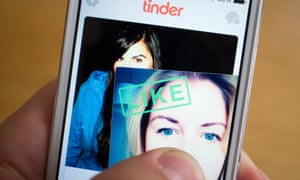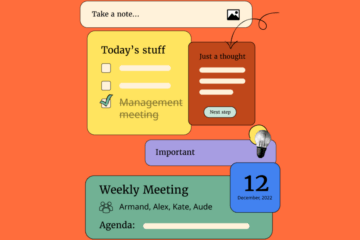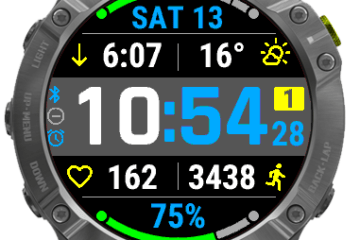
It has been more than a year since Vanity Fair bemoaned the dating apocalypse, blaming it on apps and triggering a Tinder tweet-storm that sarcastically claimed: “Sex was invented in 2012 when Tinder was launched.”
Most people are no strangers to the futile swiping and exchanged messages that lead to nowhere. It’s not uncommon for my friends to start conversations about dating by asking: “Are you still swiping? How is it going?” and compare horror stories, maybe swap phones and swipe for each other, contributing to the collective despair of online dating.
Justin McLeod, 32, is hoping to alleviate that anguish . His solution: No swiping and a $7 monthly fee.
Those are the two main changes made to Hinge, an online dating app that McLeod launched in 2011. Instead of being matched with strangers in the nearby area, Hinge matches its users with friends of friends.
McLeod says the Vanity Fair piece was a “little bit sensational” but it also helped him see clearly what he had suspected for a while: online dating was not exactly as he imagined it and swiping ended up being distracting and superficial. McLeod – once a subject of the New York Times’ Modern Love column – wants his app to create lasting relationships rather than one-night stands or connections that lead nowhere.
“At the end of last year, we felt like we just weren’t living up to our mission of helping people find relationships. We were trying to add new features to help turn matches into conversations and they would make small gains, but not huge gains,” he says. For a large part, people were having a bad experience. “The Vanity Fair article came out at that time. And then we started to do our own research, only to find out things like: more than four in five users who were looking for relationships never found one on a swiping app.”
On the old app, just 15% of Hinge matches resulted in conversation. So he and his team went back to the drawing board and decided to build something new, something with no swiping. Swiping, he says, tends to dehumanize people and gamifies online dating, making it akin to playing a slot machine where after each swipe the user expects a jackpot: a match. But instead of following through on the match, users then chase after another and another.
Instead of swiping left or right on other people, users will now be “dropped straight into their stories”, says McLeod. “If you are interested in someone, rather than swiping them right, you engage with them in some way. You can like one of their photos, you can comment on one of their photos, you can respond to one of the questions that they answered. And when you do that, you show up in their impressions sections. And when they are interested back in you, you get the connect button and can start the conversation.”
On the new app, he says, more than 50% of matches result in conversations – a number he hopes to improve further.
“We just don’t want people to feel like their time is being wasted or they are getting false signals – not understanding who is liking them and who is not,” he says.
By charging users a monthly membership fee, he hopes to weed out those who are not looking for a serious relationship and thus improving the overall experience of users who pay.
McLeod does not pretend to be the first person to think of charging for a dating app – rather he is using more established apps as inspiration.
“We wanted to create the next generation Match.com or eHarmony,” he says. The lower price point is designed to appeal to a younger demographic – ideally, those between 25 and 35. Over time, McLeod hopes to expand the age range to include most ages.
A survey of about 30,000 people conducted by a data-driven lender, Earnest, found 36-55-year-olds were 50% more likely to pay for a dating app than 18-26-year-olds.
While Hinge, eHarmony and Match.com charge all users for memberships, other apps charge a small monthly fee for premium services. For example, a Tinder plusprofile lets you swipe all day long, unswipe your most recent swipe as well as let you swipe in places where you are not. When Tinder first rolled out its plus profiles in the US, it announced that those under 30 would pay $9.99 a month and those over 30 would pay $19.99. The pricing has since changed.OkCupid, too, offers premium services – including no ads, more storage and more search options. Yet, the true appeal of OkCupid’s A-list is the ability to visit someone’s profile without the app telling them that you did so.
Tinder, OkCupid and Match.com are all owned by Match Group Inc, which is a publicly traded company. In its second-quarter earnings, the company reported that its paid-member count went up by 30%, reaching 5.3 million paid users. Tinder alone surpassed one million paying users by the end of March.
Despite their premium services, free apps are often considered hookup apps, according to McLeod.
“We realized that there is a big difference – when looking at the market – between apps that had a membership fee and those that didn’t. Essentially, those that didn’t had a hookup reputation and those that did had a relationship reputation,” he said, noting that there is a level of seriousness from investing in a membership fee. Those who want to hookup can find other, free alternatives. “Someone who just wants to hook up is not going to pay for Hinge, because there is Tinder. There is Bumble. There is other places they can go to do that.”
Yet for some users, paying for online dating is not a show of dedication to finding the perfect mate, but rather of desperation.
“I am not prepared to admit that I am so desperate to pay for an app,” one friend told me. When I pointed out that the price was less than Netflix, she shrugged and said: “Netflix never sent me a dick pic.”
[Source:-The Guardian]



